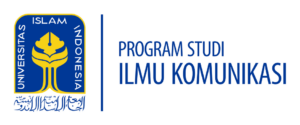Hundreds of UII Student Learn to Fight Hoaxes
Hundreds of combined students from all of DIY huddled in front of the Auditorium on the 2nd Floor of the UII Library Building on September 28, 2019. They were also activists from the student press, the journalistic community, and many were also students of the Communication Science Department. Not only students, there are also lecturers and education staff who participated in this activity. Everyone looked enthusiastic because they were also busy carrying laptops to follow the material. This event is a collaboration with the Communication Science Department of UII and the Alliance of Independent Journalists (AJI) Indonesia, which is also supported by Google News Initiative and Internews.
The activity entitled “Halfday Facting Checking” was facilitated by two Google certified trainers namely Rini Yustiningsih and Agung Purwandono. This activity was also held ahead of International Rights to Know Day on September 28. The focus of this training is to hone the skills of the general public, community, campus academics, student journalists to utilize a number of tools on the internet to conduct online verification that is widely circulating in cyberspace.
The speaker, Rini Yustiningsih, from Solo Pos Newspaper, and Agung Purwandono from KR.com showed several slides presenting about hoax examples. First, what must be understood before checking the facts is understanding the difference between Misinformation and Disinformation. Misinformation means wrong content but is trusted by the broadcaster. Whereas on the contrary, Disinformation is the wrong content, and the broadcaster knows it is wrong, but is still intentionally distributed.
Rini said, there are 7 kinds of misinformation content. For example, examples of misinformation that are misleading. Events are different, but the context is related to other contexts or assumptions. Rini gave an example of earthquake news in regencies in Indonesia by adding “In this location the 6.5 magnitude earthquake was visited after Jokowi Masyaaalah” he said. There is no direct relationship between Jokowi’s visit and the earthquake. There are also examples of information contents that are illogical but are trusted because of certain religions and beliefs. Rini and Agung gave an example of a Facebook account showing a picture of a smiling baby and added, “This baby smiled at birth because he escaped the fierceness of his mother who wanted to abort her.”
But is there any reason behind misinformation and disinformation content? First, this is due to the weak quality of journalism, said Agung. Journalists often (and of course the mass media) are more concerned with profits and clicks than quality. The essence of journalism is forgotten for profit. Second, misinformation and disinformation can often also occur to create an atmosphere that Agung said, “funny content.” Some content creators also create such ambiguous content for the sake of earning money. Furthermore, Agung said, and this was recently rampant and crowded during the last election moment which was the reason, “political movements. Of course the reason for content to be misinformed and also because the content was made by clickbait. This type of clickbait content sacrificed accuracy, quality, and correctness thereby increasing the amount of revenue from clicks and traffic on the page.
Tips For Fighting Hoax
Agung gives tips for fighting hoaxes, misinformation, and disinformation. First, do not immediately believe and share information what you get on social media. If you find a hoax, fight. You also have to be skeptical (suspicious), check, and re-check. If you find disinformation and misinformation content, don’t be silent. Do the following, said Agung. Check the site address, for example check the site address on the domainbigdata.com site. “Enter the site address into the domain databigdata. Later you will see which websites are credible and open, which are suspicious,” Agung said. Try comparing kompas.com and enter beritaterheboh.com enter domainbigdata.com, he said again to test.
Agung also said, we should check visual details. Often events are written in Jogja, but after examining the visual details show the building is not jogja. Be careful too many writings that mimic the original news. Check “about us” or “editor” menu. If the publisher, website editor clearly stated, clear address, and trusted, the content is likely to be trusted and credible. “According to the Press Law, it must be clear and the name of the person in charge,” said Agung. In addition, the news web should include Guidelines for Media News Coverage on its page.
In addition to checking facts and hoaxes, participants were asked to be hygienic in the digital world. The material “Digital Hygiene” which is also the closing session advises us to always change passwords (keywords) on email, smart phone applications, and everything connected in the digital world. Even if you don’t, use strong keywords that aren’t easy to guess. Agung and Rini suggested that participants can try to enter passwords on the password strength test website at howsecureismypassword.net. Participants are also asked to enter an email address on the website haveibeenpwneed.com to find out if an email has been broken into. If you have, protection measures must be taken immediately: strengthen passwords, avoid accessing email on public computers, and so on.

